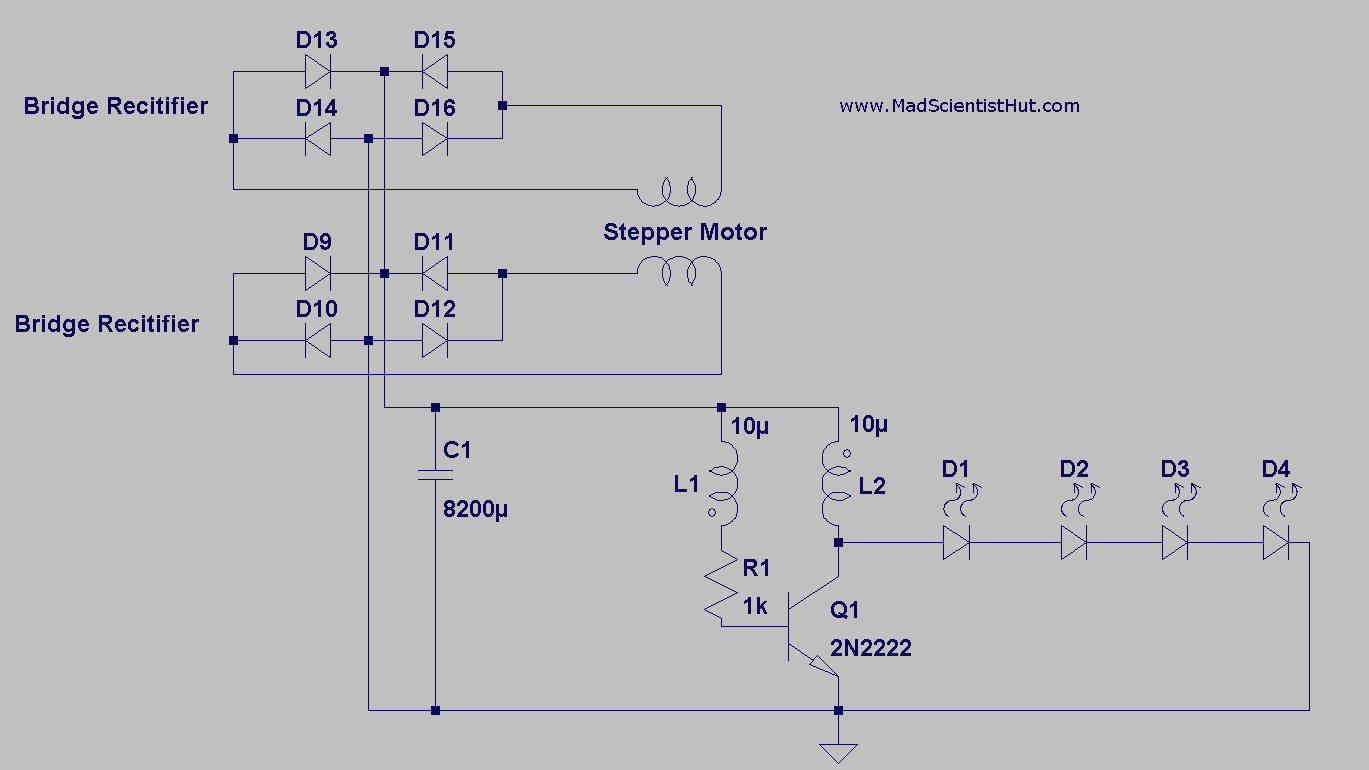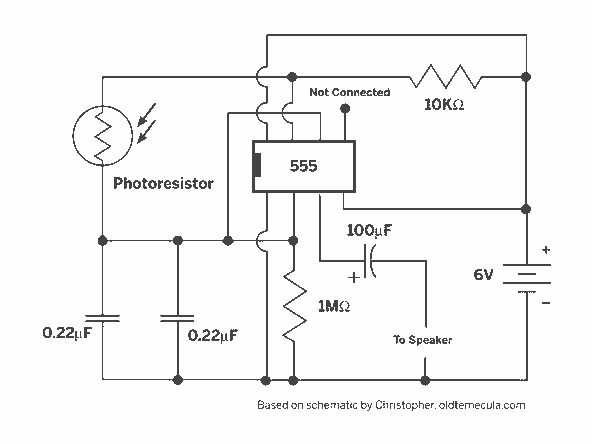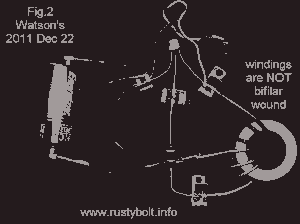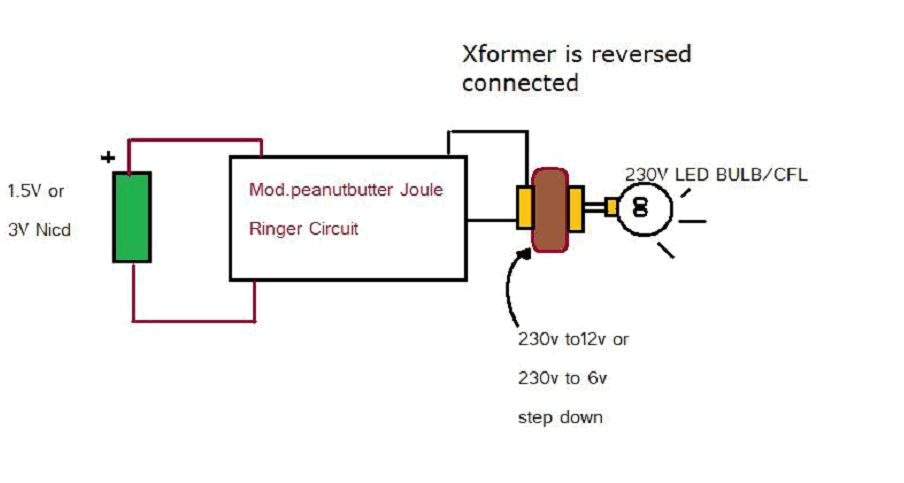
Joule Thief
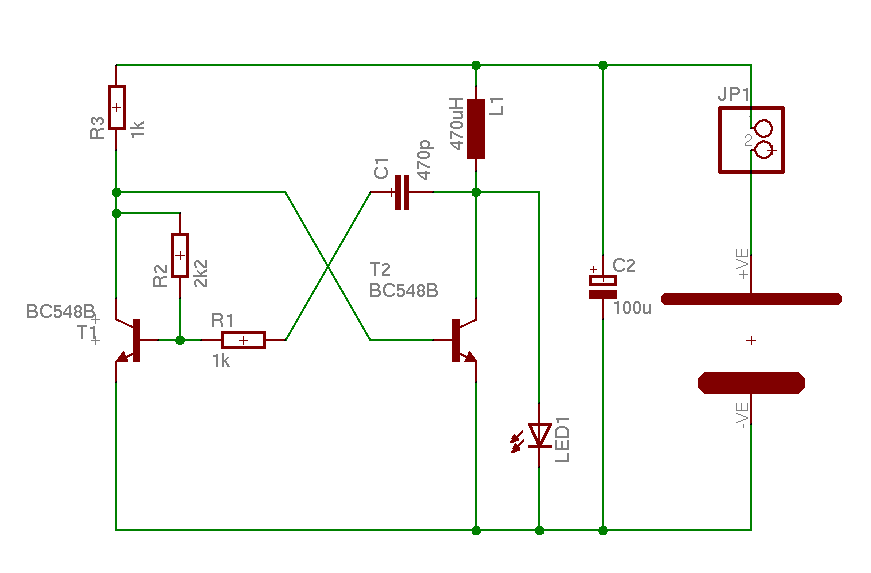
A small issue was identified and resolved, likely due to the use of an outdated version of CadSoft's Eagle software followed by a newer version. The Eagle project files have been checked in the current version (6.4), and a new zip file has been created. The circuit boards produced by Oshpark appear very professional, and images of the project have been shared along with a discussion. This project marks the first use of the "toner transfer" method for creating a printed circuit board. Several resources are available online that provide thorough instructions on this technique. The circuit design prioritizes compactness, deviating from some conventional design practices. A surface-mount component is placed on the same side as other components, with only the battery holder positioned on the designated side. The schematic functions as a voltage converter, drawing only 20mA from a 1.5V cell to illuminate a white LED. The term "Joule Thief" describes the circuit's capability to operate using a battery that would otherwise be considered depleted. It was observed that "spent" batteries from a Gamecube Wavebird controller can power this torch for several weeks continuously.
The circuit schematic described functions as a Joule Thief, a type of DC-DC converter that allows for the efficient use of low-voltage batteries. The design typically includes a few key components: a transistor, a resistor, an inductor, and a diode. In this case, the transistor is used to switch the current, while the inductor stores energy in the magnetic field when the transistor is turned on. The circuit operates by rapidly turning the transistor on and off, which allows the inductor to charge and discharge, generating a higher output voltage than the input voltage from the battery.
The choice of using a surface-mount component on the same side as other components is a design decision aimed at minimizing the overall footprint of the circuit board. This approach can often lead to more compact designs, which is particularly advantageous in applications where space is limited. The battery holder's placement on the "correct" side ensures that the orientation is consistent for ease of assembly and replacement.
The operational efficiency of the Joule Thief is particularly beneficial when dealing with batteries that have low voltage, such as those nearing depletion. The circuit's ability to draw power from these batteries extends their usability, making it a practical solution for portable electronic devices. The capability to power a white LED while drawing only 20mA demonstrates the circuit's effectiveness in low-power applications, providing a reliable light source for extended periods even when using batteries that would otherwise be discarded.
Overall, this project illustrates innovative approaches in electronic design, particularly in maximizing the utility of available resources while maintaining a professional appearance through the use of advanced PCB manufacturing techniques.Brian and I did spot and eliminate a little problem. I believe it was probably caused by me using an old version of CadSoft`s Eagle, and then (later) a newer version. Therefore I have checked the Eagle project files in the current version (6. 4), and re-made the zip file (linked at the bottom of the page). I think the circuit boards made by oshpark look very smart and professional, Brian has kindly shared some images and there is a discussion about the project here. This is the first project where I`ve used the "toner transfer" technique to make a printed circuit board.
There are plenty of other web-pages which give excellent descriptions of how to do it, so I won`t replicate that. I wanted to make this circuit as small as possible, so I`ve not followed some of the circuit-maker`s conventions.
There`s a surface-mount component on the same side as the other components, only the battery holder is on the "correct" side. Here`s the schematic, it works as a voltage converter to draw just 20mA from a 1. 5V cell to light that white LED. The term `Joule Thief` is used because the circuit will work from a cell which would otherwise be considered spent.
I found that if the batteries in my Gamecube Wavebird controller stopped working, the same "spent" batteries will quite happily run this torch for a couple of weeks. Continuously. 🔗 External reference
The circuit schematic described functions as a Joule Thief, a type of DC-DC converter that allows for the efficient use of low-voltage batteries. The design typically includes a few key components: a transistor, a resistor, an inductor, and a diode. In this case, the transistor is used to switch the current, while the inductor stores energy in the magnetic field when the transistor is turned on. The circuit operates by rapidly turning the transistor on and off, which allows the inductor to charge and discharge, generating a higher output voltage than the input voltage from the battery.
The choice of using a surface-mount component on the same side as other components is a design decision aimed at minimizing the overall footprint of the circuit board. This approach can often lead to more compact designs, which is particularly advantageous in applications where space is limited. The battery holder's placement on the "correct" side ensures that the orientation is consistent for ease of assembly and replacement.
The operational efficiency of the Joule Thief is particularly beneficial when dealing with batteries that have low voltage, such as those nearing depletion. The circuit's ability to draw power from these batteries extends their usability, making it a practical solution for portable electronic devices. The capability to power a white LED while drawing only 20mA demonstrates the circuit's effectiveness in low-power applications, providing a reliable light source for extended periods even when using batteries that would otherwise be discarded.
Overall, this project illustrates innovative approaches in electronic design, particularly in maximizing the utility of available resources while maintaining a professional appearance through the use of advanced PCB manufacturing techniques.Brian and I did spot and eliminate a little problem. I believe it was probably caused by me using an old version of CadSoft`s Eagle, and then (later) a newer version. Therefore I have checked the Eagle project files in the current version (6. 4), and re-made the zip file (linked at the bottom of the page). I think the circuit boards made by oshpark look very smart and professional, Brian has kindly shared some images and there is a discussion about the project here. This is the first project where I`ve used the "toner transfer" technique to make a printed circuit board.
There are plenty of other web-pages which give excellent descriptions of how to do it, so I won`t replicate that. I wanted to make this circuit as small as possible, so I`ve not followed some of the circuit-maker`s conventions.
There`s a surface-mount component on the same side as the other components, only the battery holder is on the "correct" side. Here`s the schematic, it works as a voltage converter to draw just 20mA from a 1. 5V cell to light that white LED. The term `Joule Thief` is used because the circuit will work from a cell which would otherwise be considered spent.
I found that if the batteries in my Gamecube Wavebird controller stopped working, the same "spent" batteries will quite happily run this torch for a couple of weeks. Continuously. 🔗 External reference
